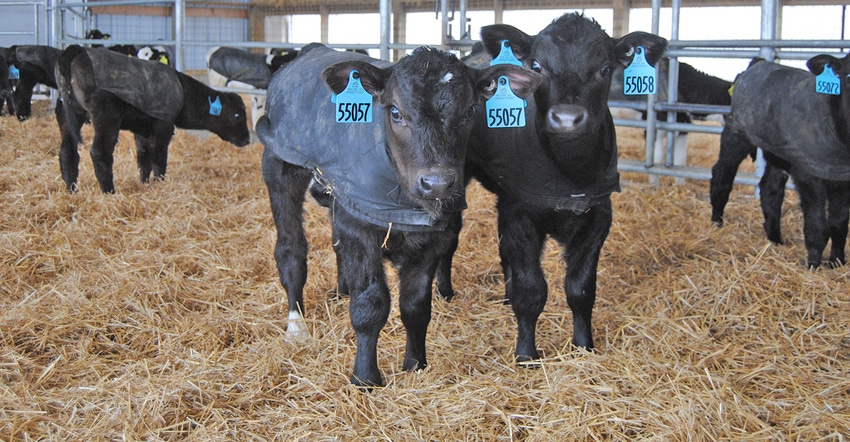September 25, 2018

By Ryan Sterry and Amanda Cauffman
Current commodity prices have led many dairy farmers to seek alternative means of cash flow, which has caused an increased interest in mating a portion of the dairy herd to beef sires. The combination of sexed semen resulting in increased dairy heifer supply, greater rearing costs and lower market prices for dairy replacements has made marketing beef genetics an attractive option.
Producing beef-cross calves has the potential to increase the marketability and price of bull calves and crossbred heifers. In addition, it can offer a genetic advantage for dairy farmers to focus on their best genetics by breeding their superior cows to heifer sexed semen to produce dairy replacement heifers, while breeding the genetically inferior cows to beef sires, providing an alternative market for lower end genetics.
In dairy breeding, the sole genetic focus is on replacement females and the traits that will make her an elite-producing, long-lived, trouble-free cow. In the beef industry, genetic selection has had to focus on both maternal (replacement females) and carcass (terminal) traits. Weaning weights, yearling weights, rib-eye area and marbling are examples of terminal traits used for breeding to increase carcass merit and efficiency in market animals. If dairy producers want to fully capitalize on the dairy beef market, they will need to begin familiarizing themselves with these traits, as well.
It’s assumed all dairy-beef-cross calves will be fed out and marketed as finished/fat cattle. Yes, the potential exists to save some dairy-beef-cross females for breeding as beef, but that practice has been discouraged.
With the assumption that dairy-beef crossbreds are all destined for the finished-cattle market, in can be easy, in a dairy mindset, to assume beef sire selection is not important. These calves are secondary to the genetics going into replacement heifers because they will not be retained in the herd; hence, they hold very little genetic merit. However, using the right beef sire can have a great impact on the marketability and profitability of the resulting crossbred offspring.
Calving ease
Semen cost, conception and calving ease are logical starting points for beef on dairy sire selection. Emphasis on calving ease may vary, depending on the use for heifers vs. cows, and breed of dairy cattle (Holstein vs. Jersey vs. crossbred). Frame size and muscling should also be taken into account, with beef sire selection to complement the parent breeds. For Jerseys, it’s increasing size and growth but with low birth weights. For Holsteins, too large of frames is most often the issue, so beef sires that moderate frame score and increase muscling are desired.
It may be surprising to some, but dairy genetics often rank high for marbling. So, beef sire selection for marbling may not be warranted. On the other hand, muscle shape in the rib-eye area and round can be extremely important for grid-based marketing, and often is a trait dairy genetics scores poorly on. Coat color is also a factor in many markets, with discounts for non-solid black. Beef sire breed can play into the prevalence of “spotting” of white hair vs. solid black.
Dairy producers are more familiar with “red carrier” as the term for black coat color but carrying the recessive red gene. In beef, homozygous and heterozygous black is used instead. Homozygous black carries both black hair coat genes, while heterozygous would be the equivalent of red carrier. There are many beef breeds with homozygous black sires available.
Most beef breeds offer a greater selection of polled genetics than dairy breeding currently offers, and looking again for homozygous (both genes) polled will offer the advantage of producing all polled calves.
Sterry is the St. Croix County Extension agriculture agent and Cauffman is the Grant County Extension agriculture educator. This column is provided by the University of Wisconsin-Extension’s Wisconsin Beef Information Center.
You May Also Like




